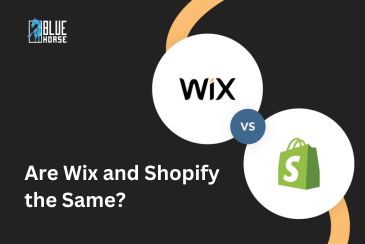The Rise of Live Commerce: Revolutionizing Online Shopping
The retail landscape has undergone dramatic transformations over the past few decades, with live commerce emerging as a groundbreaking trend in e-commerce. By merging real-time video streaming with shopping, live commerce brings the experience of in-store shopping to the digital realm, providing consumers with an engaging, interactive, and personalized buying journey. Let's explore what live commerce is, why it’s gaining traction, and how businesses are leveraging it with real-world examples relevant to 2025.
What is Live Commerce?
Live commerce, also known as live-stream shopping or live shopping, combines live video streaming with e-commerce functionalities. During a live commerce session, a host—often a brand representative, influencer, or celebrity—showcases products, answers questions in real-time, and provides a direct path for viewers to purchase products instantly.
This format not only fosters a sense of immediacy and exclusivity but also creates an engaging way to showcase products in action, increasing consumer confidence in their purchasing decisions. It also bridges the gap between traditional retail and e-commerce by allowing shoppers to interact with sellers in real-time, mimicking the personalized experience that physical stores offer.
Why Live Commerce Matters in 2025
- Real-Time Interaction: One of the major appeals of live commerce is its real-time interactivity. Unlike traditional e-commerce, where shoppers rely on static images and product descriptions, live commerce enables consumers to ask questions, request demonstrations, and receive instant feedback. This dynamic interaction replicates the personal engagement found in brick-and-mortar stores, making it easier for consumers to trust the products they see online.
A report by Statista indicates that 40% of online shoppers in the United States have shopped at least once using live commerce. This number continues to grow, especially as younger generations—more accustomed to digital communication—embrace the technology. This shift toward real-time interaction reflects changing consumer expectations and demonstrates how live commerce is reshaping the e-commerce landscape.
- Enhanced Trust: Trust is a critical factor in online shopping, and live commerce addresses this need head-on. Seeing products in action—whether it’s a product demonstration or a “how-to” session—builds confidence in the quality and utility of the product. Shoppers are able to witness product details that are often missed in traditional product images, such as texture, usability, and color accuracy.
According to Statista, 65% of online consumers prefer live interactions when making purchasing decisions. The visual experience of seeing a product being used in real-time, combined with the ability to ask immediate questions, reduces the uncertainty associated with online shopping and leads to higher levels of customer satisfaction.
- Boosted Conversion Rates: Live commerce events often create urgency with limited-time offers, exclusive deals, or flash sales. This urgency pushes consumers to make faster decisions, thus driving up conversion rates. The live-stream format taps into the psychological principle of scarcity and urgency—key factors that have been proven to enhance purchase intent.
Forbes reports that 60% of live commerce viewers make a purchase during the stream due to these exclusive offers. This represents a significant increase compared to traditional e-commerce methods, which rely on passive browsing and delayed purchasing decisions.
- Community Building: Beyond individual transactions, live commerce is a powerful tool for fostering a sense of community. During live sessions, consumers engage not just with the host but also with other viewers through live chats and comments. This sense of belonging encourages consumers to feel like part of a brand’s story, which is key to developing long-term customer loyalty.
A Harvard Business Review article highlighted that live commerce drives customer loyalty, with 55% of live viewers returning to purchase again. This is a reflection of how effective live commerce can be in building brand advocacy, transforming one-time buyers into loyal customers.
- Sustainability Integration: As sustainability continues to be a top priority for many consumers, live commerce has adapted by showcasing eco-friendly products and promoting sustainable practices. With a growing number of consumers prioritizing environmental concerns, live commerce platforms are aligning with these values by focusing on green products and ethical sourcing.
A GlobalData report found that 40% of millennials are more likely to purchase from brands that emphasize sustainability. By integrating sustainability into their live commerce events, brands can attract a conscious consumer base while also fostering trust and transparency in their supply chain practices.
Real-World Examples of Live Commerce Success in 2025
- Taobao Live (Alibaba)
China’s e-commerce giant Alibaba continues to dominate live commerce with its platform, Taobao Live. During the 2024 Singles’ Day shopping festival, Taobao Live demonstrated the power of artificial intelligence (AI) by providing influencers with AI-driven tools to offer personalized recommendations to shoppers. This technological leap has positioned Taobao Live as a leader in leveraging AI for live shopping, creating a personalized experience for millions of viewers.
The platform has also innovated in its approach by introducing social commerce elements, where influencers and brands can partner to directly engage with consumers in real-time. With over 400 million active users, Taobao Live has revolutionized the live commerce space by integrating shopping with social interaction.
- Amazon Live
Amazon’s live commerce platform remains a major player in 2025, with enhanced AI analytics that allow hosts to offer hyper-personalized product suggestions. By collecting real-time data on consumer behavior, Amazon Live is able to tailor its broadcasts to individual preferences. For example, during the 2024 Black Friday sales, Amazon Live’s real-time data integration helped drive a 40% increase in conversion rates compared to traditional e-commerce methods.
Amazon Live has expanded its reach by incorporating influencer collaborations, where influencers host live streams to promote products. This combination of AI and influencer marketing has allowed Amazon to reach a wider, more engaged audience.
- Nykaa’s Beauty Live Events
India’s leading beauty retailer, Nykaa, has expanded its live commerce efforts by incorporating augmented reality (AR) technology. Customers can now virtually try on makeup during live sessions, bridging the gap between physical and digital shopping experiences. This innovation has made Nykaa a frontrunner in integrating AR into live commerce, allowing shoppers to experiment with different looks before making a purchase.
These AR features have significantly enhanced the user experience by providing a more immersive and personalized shopping journey, which has increased customer engagement and sales conversion rates.
- Walmart and TikTok Collaboration
Walmart’s continued collaboration with TikTok in 2025 showcases how short-form video content can drive sales. By leveraging TikTok’s advanced algorithms, Walmart’s live streams now reach highly targeted audiences, ensuring that every session delivers maximum ROI.
TikTok’s vast user base and viral content capabilities have provided Walmart with an unparalleled platform to engage with younger, more diverse audiences. This collaboration is a prime example of how live commerce can seamlessly integrate with social media to create a highly effective sales funnel.
- ZARA’s AI-Driven Try-On Sessions
ZARA has revolutionized live commerce by introducing AI-powered try-on sessions. In these events, AI models simulate how clothes will fit on different body types in real-time, offering a personalized shopping experience. This approach has significantly boosted ZARA’s online sales and reduced return rates, as customers are better able to assess fit and style before making a purchase.
By implementing AI, ZARA has not only enhanced the customer experience but also provided valuable data on customer preferences, which can be used to optimize inventory and product offerings.
Best Practices for Implementing Live Commerce in 2025
- Leverage Advanced Technology: Utilize AI and AR to create immersive and personalized experiences for your audience. Deloitte found that brands using AI during live events saw a 25% higher engagement rate.
- Choose the Right Host: The success of live commerce heavily depends on the host’s ability to engage the audience. Influencers and experts with strong personal brands can significantly elevate the success of your live streams.
- Focus on Storytelling: Showcase your products in a way that tells a story and highlights their value proposition. By creating an emotional connection with your audience, you can drive deeper engagement and brand loyalty.
- Emphasize Sustainability: Highlight eco-friendly and sustainable products to attract the growing demographic of environmentally conscious shoppers. Incorporating sustainability into your live commerce strategy not only aligns with consumer values but also boosts brand credibility.
- Analyze Metrics with AI: Use AI-driven analytics to measure engagement, sales, and viewer retention to optimize future live commerce strategies. By understanding what works and what doesn’t, brands can improve their live commerce efforts and maximize ROI.
The Future of Live Commerce
As we progress further into 2025, the potential for live commerce continues to expand. Virtual reality (VR) is on the cusp of mainstream adoption, allowing brands to host fully immersive shopping events. Consumers will be able to browse and shop in 3D environments, creating a truly unique and engaging experience.
AI-driven personalization tools are also becoming more sophisticated, enabling businesses to tailor live shopping sessions to individual viewer preferences. With the help of machine learning algorithms, hosts can deliver real-time product recommendations that increase the likelihood of a purchase.
Additionally, live commerce is now being adopted across a wider range of industries, including automotive, healthcare, and even real estate. For instance, realtors are hosting live virtual tours of properties, while healthcare brands are using live commerce to demonstrate medical devices and wellness products.
Conclusion
Live commerce is not just a trend but a transformative force in the e-commerce industry. By enabling real-time interaction, building trust, and creating a sense of urgency, it has redefined how consumers shop online. For businesses, adopting live commerce is essential to staying competitive in a dynamic market. As seen through examples from Alibaba, Amazon, Nykaa, Walmart, and ZARA, the possibilities are immense, and the results speak for themselves.
Whether you're a budding entrepreneur or an established brand, 2025 is the perfect time to harness the power of live commerce and elevate your online shopping experience.





















Comments